#Thoughts of Dr. Manmohan Singh
Explore tagged Tumblr posts
Video
youtube
Thoughts of Dr. Manmohan Singh | Suvichar | डॉ. मनमोहन सिंह | Dr. Manmoh...
#youtube#Thoughts of Dr. Manmohan Singh#डॉ. मनमोहन सिंह#dr manmohan singh#suvichar#thoughts#my thougts#Dr. Manmohan Singh- Sapno ko pura kare#quoteoftheday#life quotes#life thoughts
0 notes
Text
A Tribute to Dr. Manmohan Singh: A Visionary Leader Who Shaped India’s Path, Om Shanti: Col Rajyavardhan Rathore

We mourn the profound loss of Dr. Manmohan Singh, a humble yet towering figure in India’s history whose visionary leadership and unyielding wisdom shaped the trajectory of our nation’s progress. Col. Rajyavardhan Rathore expresses his heartfelt condolences to Dr. Singh’s family, acknowledging the immense void his departure leaves in the hearts of millions. Om Shanti.
Dr. Manmohan Singh’s contributions to India extend far beyond his roles as an economist, policymaker, and Prime Minister. His work reflected not just a deep intellect but also an unmatched commitment to the nation’s development and the upliftment of its people.
A Life of Service and Leadership
Dr. Singh’s journey from a modest background to the highest office in the country is a testament to his extraordinary determination and dedication. As an architect of India’s economic reforms in 1991, he played a pivotal role in liberalizing the economy, unlocking unprecedented growth, and steering India onto the global stage.
As Prime Minister, his tenure was marked by a focus on inclusive development, peace-building efforts, and strengthening India’s position as a responsible global power. Despite his immense achievements, Dr. Singh remained a paragon of humility and grace, earning the respect and admiration of friends and critics alike.
A Legacy of Wisdom and Vision
Dr. Manmohan Singh’s legacy is one of resilience, thoughtful leadership, and an unshakable belief in the potential of India and its citizens. His work will continue to inspire policymakers, leaders, and generations of Indians to strive for excellence while upholding the values of integrity and compassion.
In honoring his memory, we remember his profound contributions, not just as a leader but as a guide whose vision transformed challenges into opportunities.
Col. Rajyavardhan Rathore joins the nation in mourning the loss of this extraordinary leader. His thoughts and prayers are with Dr. Singh’s family during this difficult time. May his soul rest in eternal peace. Om Shanti.
2 notes
·
View notes
Text
Sanjay Saraf SFM: Premier CA Final SFM Coaching
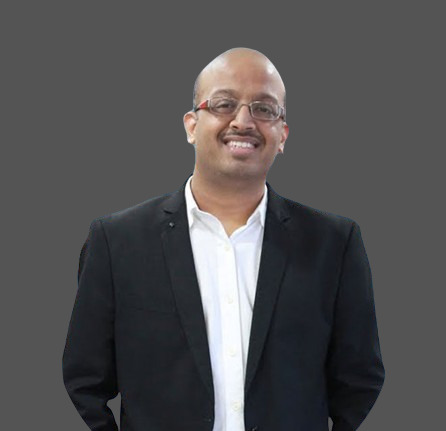
Sanjay Saraf SFM: Premier Coaching for CA Final SFM
For aspiring Chartered Accountants, mastering Strategic Financial Management (SFM) is crucial. Sanjay Saraf SFM has emerged as a leading choice among CA Final students, offering a comprehensive and practical approach to this complex subject.
About Sanjay Saraf
Sanjay Saraf is a distinguished finance educator with an impressive academic and professional background. He holds certifications such as Chartered Financial Analyst (CFA) and Financial Risk Manager (FRM), along with a Master’s in Finance from ICFAI, Hyderabad. His excellence in Strategic Financial Management was recognized in 2006 when he received a gold medal and merit certificate from Dr. Manmohan Singh.
Courses Offered at Sanjay Saraf SFM
Sanjay Saraf SFM provides a diverse range of courses tailored to meet the needs of both domestic and international students:
Domestic Courses:
Financial Management for CA Intermediate
Advanced Financial Management (AFM) for CA Final
Strategic Financial Management (SFM) for CMA Final
Financial Analysis & Business Valuation for CMA Final
Financial, Treasury & Forex Management for CS Professional
Risk Management (RM) for CA Final
International Courses:
CFA Program Review — All Three Levels
FRM — All Levels
Teaching Methodology: A Blend of Theory and Practical Insights
Sanjay Saraf SFM's teaching approach is characterized by a blend of theoretical knowledge and practical application. He employs various teaching modes, including Face-to-Face (Live), Deferred Live, and Direct-to-Home, to cater to the diverse needs of students. His lectures are known for their clarity, depth, and real-world relevance, making complex financial concepts accessible and engaging.
Professional Engagements and Industry Contributions
Beyond his role as an educator, Sanjay Saraf actively engages with the financial industry. He has advised numerous CEOs and boards on optimizing treasury and risk management functions. Notably, he played a pivotal role in setting up an algorithmic trading desk for an investment house, focusing on arbitrage using option Greeks and volatility trading.
Student Testimonials and Feedback
Students of ca final sfm sanjay saraf often commend the institution for its rigorous academic environment and comprehensive curriculum. Many have shared positive experiences, highlighting the depth of knowledge imparted and the practical skills gained. However, some students have noted that the extensive coverage of topics may require additional time and effort to fully grasp the material. It’s important to consider individual learning preferences and study habits when choosing this course.
Awards and Recognitions
Sanjay Saraf SFM's contributions to finance education have been widely recognized. In 1998, he received a merit certificate and a silver medal in MS Finance for his exceptional performance in quantitative methods and financial management. The following year, he was awarded a merit certificate and a gold medal for his outstanding achievements in international finance. In 2006, his excellence in Strategic Financial Management was acknowledged with a gold medal and merit certificate presented by Dr. Manmohan Singh.
Sanjay Saraf Education Institute (SSEI): Empowering Future Leaders
To further his mission of providing quality education, Sanjay Saraf co-founded the Sanjay Saraf Education Institute (SSEI) with Mr. Rajesh Rakesh. SSEI offers a range of programs in CA, FRM, CFA, CMT, and CMA, focusing on delivering top-notch instruction, personalized mentoring, and regular mock exams. The institute has become a preferred choice for students aiming to excel in the financial sector, with a track record of producing top scorers in both Intermediate and Final exams.
Final Thoughts
While Sanjay Saraf SFM offers comprehensive content and expert guidance, some students have expressed concerns about the length and depth of the lectures. It’s advisable to assess personal learning preferences and consider supplementary resources to ensure effective understanding and exam preparation. Overall, Sanjay Saraf SFM provides a robust foundation for students aspiring to excel in Strategic Financial Management.
0 notes
Text
[ad_1] Singapore’s Minister for Foreign Affairs Vivian Balakrishnan visited Indian High Commission in Singapore and signed the condolence book opened in memory of former Prime Minister Manmohan Singh. Balakrishnan described Manmohan Singh as an “eminent statesman” who served India with humility and integrity. Vivian Balakrishnan also highlighted Manmohan Singh’s role in strengthening ties between India and Singapore. He also shared an old picture in which former Singapore PM Lee Hsien Loong was interacting with Manmohan Singh. In a post on X, Balakrishnan stated, “Manmohan Singh was an eminent statesman who served his country with humility and integrity. He also strengthened India ties. Our thoughts are with Dr Singh’s family and the people of India during this period of loss.” Dr Manmohan Singh was an eminent statesman who served his country with humility and integrity. He also strengthened India-Singapore ties. Our thoughts are with Dr Singh’s family and the people of India during this period of loss. : MFA (1), PMO (2) pic.twitter.com/mUJfoYkAsy — Vivian Balakrishnan (@VivianBala) December 30, 2024 Indian High Commission in Singapore appreciated Vivian Balakrishnan for visiting Indian High Commission in Singapore to offer condolences on Manmohan Singh’s demise. In response to Vivian Balakrishnan’s post on X, Indian High Commission in Singapore stated, “We sincerely appreciate Hon’ble Minister for Foreign Affairs of #Singapore @VivianBala for visiting the @HCI_Singapore to sign the Condolence Book opened in memory of Dr. Manmohan Singh, former Prime Minister of India.” Manmohan Singh passed away at the age of 92 due to age-related medical issues in Delhi on December 26. He was cremated with full state honours at Nigambodh Ghat in Delhi’ Kashmere Gate in the presence of his family, friends, colleagues, and government dignitaries on December 28. [ad_2] Source link
0 notes
Text
[ad_1] Singapore’s Minister for Foreign Affairs Vivian Balakrishnan visited Indian High Commission in Singapore and signed the condolence book opened in memory of former Prime Minister Manmohan Singh. Balakrishnan described Manmohan Singh as an “eminent statesman” who served India with humility and integrity. Vivian Balakrishnan also highlighted Manmohan Singh’s role in strengthening ties between India and Singapore. He also shared an old picture in which former Singapore PM Lee Hsien Loong was interacting with Manmohan Singh. In a post on X, Balakrishnan stated, “Manmohan Singh was an eminent statesman who served his country with humility and integrity. He also strengthened India ties. Our thoughts are with Dr Singh’s family and the people of India during this period of loss.” Dr Manmohan Singh was an eminent statesman who served his country with humility and integrity. He also strengthened India-Singapore ties. Our thoughts are with Dr Singh’s family and the people of India during this period of loss. : MFA (1), PMO (2) pic.twitter.com/mUJfoYkAsy — Vivian Balakrishnan (@VivianBala) December 30, 2024 Indian High Commission in Singapore appreciated Vivian Balakrishnan for visiting Indian High Commission in Singapore to offer condolences on Manmohan Singh’s demise. In response to Vivian Balakrishnan’s post on X, Indian High Commission in Singapore stated, “We sincerely appreciate Hon’ble Minister for Foreign Affairs of #Singapore @VivianBala for visiting the @HCI_Singapore to sign the Condolence Book opened in memory of Dr. Manmohan Singh, former Prime Minister of India.” Manmohan Singh passed away at the age of 92 due to age-related medical issues in Delhi on December 26. He was cremated with full state honours at Nigambodh Ghat in Delhi’ Kashmere Gate in the presence of his family, friends, colleagues, and government dignitaries on December 28. [ad_2] Source link
0 notes
Text

Dr. Manmohan Singh's contributions will never be forgotten. The void left by your departure is hard to fill. Your memories and thoughts will always remain with us. Om Shanti.
#OmShanti#omshantishantishanti#RIP#DrManmohanSingh#greatleadership#economist#FormerPrimeMinisterOfIndia#humble
0 notes
Text
Manmohan Singh, Visionary Economist and Former PM, Passes Away at 92
New Delhi: Former Prime Minister of India, Dr. Manmohan Singh, passed away on Thursday at the age of 92 due to age-related medical conditions. He was admitted to the All India Institute of Medical Sciences (AIIMS) in Delhi, where efforts to revive him were unsuccessful.
AIIMS released a statement confirming his demise. "With profound grief, we inform the demise of former Prime Minister of India, Dr. Manmohan Singh, aged 92. He was being treated for age-related medical conditions and had a sudden loss of consciousness at home on 26 December 2024," it read. Despite immediate resuscitation efforts, Dr. Singh was declared dead at 9:51 PM.
Manmohan Singh served as Prime Minister from 2004 to 2014, leading the Congress-led United Progressive Alliance (UPA) government. Known as the architect of India’s economic liberalization in 1991, he played a pivotal role in transforming the nation’s economy during his tenure as Finance Minister under Prime Minister PV Narasimha Rao.
Prime Minister Narendra Modi expressed his condolences, calling Singh a distinguished leader and respected economist. "India mourns the loss of Dr. Manmohan Singh Ji. Rising from humble origins, he became a respected economist and served in key government roles, leaving a strong imprint on our economic policies," Modi said in a post on X (formerly Twitter).
He also shared personal memories of interacting with Singh during his tenure as Gujarat Chief Minister. "His wisdom and humility were always visible. In this hour of grief, my thoughts are with his family, friends, and admirers. Om Shanti," Modi added.
Congress leaders Sonia Gandhi and Priyanka Gandhi Vadra rushed to AIIMS upon hearing the news, while party chief Mallikarjun Kharge and MP Rahul Gandhi, who were in Karnataka, are returning to Delhi.
Manmohan Singh is credited with steering India out of a financial crisis in 1991. His economic reforms, which opened the economy to global markets, are regarded as a turning point in India’s development.
The former prime minister is survived by his wife, Gurcharan Singh, and three daughters. His legacy as a statesman and an economist will continue to shape India’s history for generations to come.
Funeral arrangements are expected to be announced soon. For latest news India in Hindi, subscribe to our newsletter!
#werindia#leading india news source#top news stories#top news headlines#top news of the day#national news#latest national news
1 note
·
View note
Text

🌹 Remembering Manmohan Singh 🌹
Today, we mourn the loss of a visionary leader and an extraordinary economist, Dr. Manmohan Singh. His remarkable contributions to India’s economic reforms and unwavering dedication to the nation will forever be remembered. 🙏
Dr. Singh’s wisdom, humility, and integrity inspired millions, leaving behind a legacy of progress and leadership. Let us honor his memory by continuing to strive for a better and more inclusive future. 🌟
Savi Web Dezine's (https://saviwebdezine.com/) thoughts and prayers are with his family and loved ones during this difficult time. 🕊️
#Condolences #RestInPeace #GreatLeaders #IndianEconomy #NationalLoss #SaviWebDezine #ThoughtsAndPrayers #LeadershipMatters #ForeverInOurHearts
#ManmohanSingh#RIP#IndiaMourns#VisionaryLeader#EconomicReforms#Respect#Inspiration#LegacyOfLeadership#NationBuilder
2 notes
·
View notes
Text
5 Leadership Lessons from Dr. Manmohan Singh
During the cherished days of my childhood, leaders like Dr. Manmohan Singh took on the great responsibility of serving our nation. They dedicated their lives to ensuring our country’s safety, economic benefit, and people’s welfare often at great personal sacrifice. These individuals do not seek awards or recognition; their true commitment lies in the sharing of noble thoughts and values. As we…
#Dr Manmohan Singh#Former Prime Minister of India#Honest Leader#Leadership#Learning from Personalities#Proud Leader#Truthfulness#Value Yourself
0 notes
Text
Post # 131
A bridge, its history and its mythology...
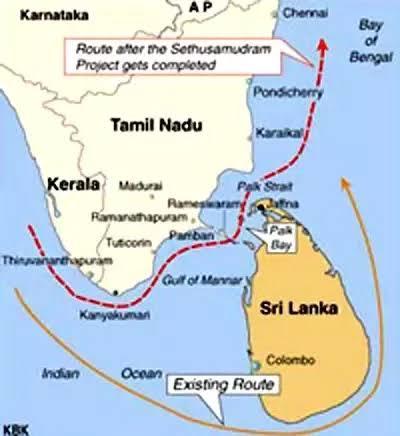
In 1860, a British Indian Naval Officer, Alfred Dundas Taylor, proposed that the time and distance taken by ships traveling from the west coast of India to its east coast and vice versa could be cut down significantly, if a sufficiently wide and deep passage was made connecting the Gulf of Mannar and The Palk Strait, separating the Indian mainland from Sri Lanka. Because of the shallow waters in the Gulf and the Strait, ships had to circumnavigate 400 nautical miles more, around Sri Lanka, taking them upto 30 more hours and a commensurate increase in cost. From 1860 till Indian independence in 1947, nine proposals were made and evaluated. But no action was taken.
In 1955, the independent Indian government set up a committee called the Sethusamudram Project Committee. After evaluating the costs and benefits, this committee found the project feasible and viable. Five more proposals and technical reports followed. But no action still, till 2005, when Dr. Manmohan Singh, the then Prime Minister, inaugurated the project, 145 years after the original proposal was made.
The project, budgeted at INR 2600 crores, was supposed to take 3 years, and was supposed to dredge a canal 165 km long, 300 meters wide and sufficiently deep to let cargo ships traverse that route.

Today is 2020. Fifteen years have passed and still no Setusamudram canal. Why? Because, right from its inception, the project had a few issues:
1. About 65 % of the ships in that area come from Africa and Europe. For them, the time saving was not 30 hours, but just 8 hours.
2. The channel could take only 30000 tonnage vessels. But most of the new ships, which are of 60000 tonnage and tankers, which are 150000 tonnes or more, cannot use the canal.
3. The project would disturb the ecological balance and destroy corals and kill marine life. It would also destroy conch trade worth INR 150 crores annually.
But the biggest issue was - the Sethusamudram canal would cut through and destroy what was left of the mythological Ram Sethu or Adam's bridge. And that would be disastrous to the political fortunes of the government that did that.
So what exactly is the story of the Ram Sethu or Adam's bridge? And why is it so sensitive? Therein lies a tale.
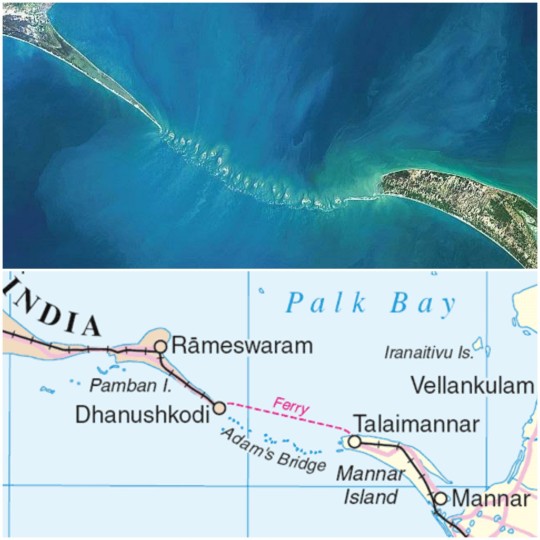
The Ram Sethu is today, a 50 km long chain of limestone shoals, between a village called Dhanushkodi, on Rameswaram Island (also called Pamban Island), in Tamil Nadu, India, and another village called Talaimannar on Mannar Island, in Sri Lanka. The bridge is believed to have been made by Lord Rama and his Vanara army to reach Lanka and rescue his wife, Sita from the evil king, Ravana. The Sri Lankan muslims, on the other hand, believe that Aadhaam, their first Islamic leader, walked over this bridge by foot from India to Lanka and thus this bridge has a holy connotation for them. Aadhaam got morphed to Adam, because the British found it easier to pronounce. Hence, this bridge was also called Adam's bridge. But for most Indians, especially Hindus, this bridge is Rama Setu or Nala Setu (because it was built by Nala, the architect-monkey in Rama's army).
That makes it mythological, right? Why worry about mythology in the 21st century?
Because that also makes the issue religious. In India, religious issues become political issues. Right wing parties like BJP and organizations like VHP put their foot down and said, "How can you break a bridge built by Ram?" Secular parties said, "Since Ram is mythological, Ram Sethu is mythological too."
I also grew up believing Ram and Ramayan to be undoubtedly mythological. But recently, I read a book called Historical Ram, written by D K Hari and his wife, D K Hemahari (who run an organization called Bharat Gyan), wherein they attempt to provide scientific and logical proof that Ram and Ramayan are historical.
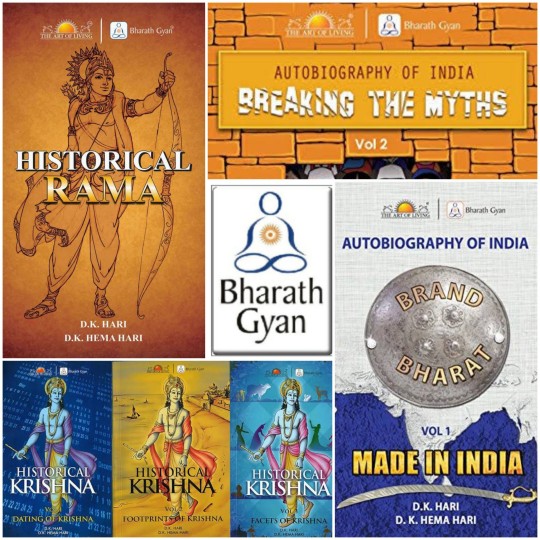
The various arguments they put forward are as follows:
1. They say Ramayana and Mahabharata are called Itihasa in Sanskrit. Itihasa = Iti + hasa. Meaning - It happened like this = History.
They say that until the British came to India, Ramayana and Mahabharata were indeed considered to be have happened. The British classified these epics as mythology.
2. They use a technology called archaeo-astrology and make some powerful propositions. Archaeo-astrology is a technique of charting the future or past sky using a scientific tool called planetarium software. This tool helps to arrive at planetary positions, given a date in future or past. Vice-versa, given a set of planetary configurations, the tool can help identify the date in future or past, when the planetary configuration will or could have occurred.
This software was apparently developed by NASA to estimate the planetary positions of Voyager missions that would take 10-12 years to reach their destinations. Now, declassified, it is available for public use. Reminds me of how the internet was a classified invention of the US defence before it was made publicly available.
The authors refer to one Mr. Pushkar Bhatnagar, who used the original Sanskrit text of Ramayana and this technique to date the era of Lord Ram. For example, the birth of Rama is explained in detail by Valmiki.
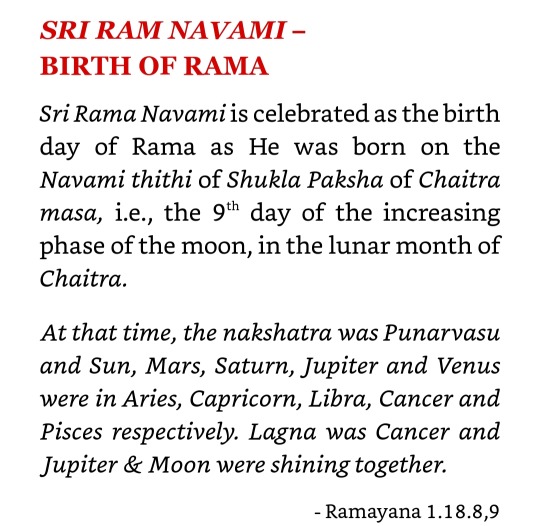
This information, when fed into the software, tells us that Ram was born on 10th January, 5114 BC, at 12.30 pm, as per the Gregorian calendar!
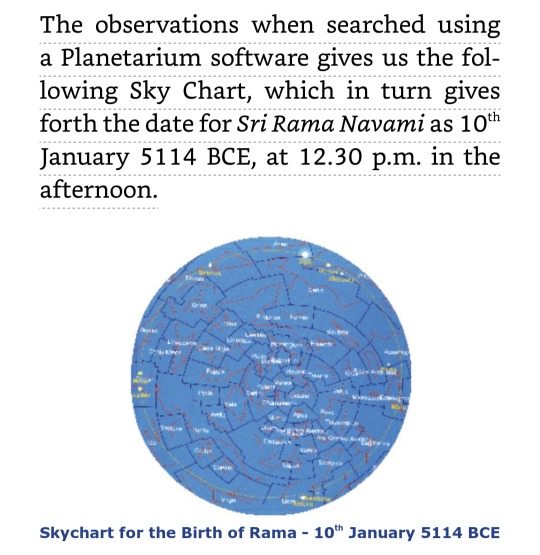
This way, all major events in Ramayan were dated. Fantastic, isn't it?

Notice how the dating shows that Ram gets exiled when he was 25 years old, and how the Khar-Dushan episode happens in the 12th year of exile. Pretty consistent results, eh?
3. The geographic locations in Ramayan are actual places that exist even today - some of them have the same names then and now.
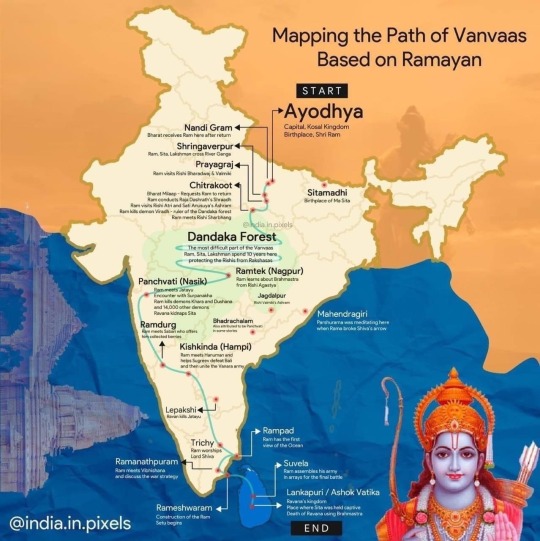
4. There is one school of thought that says that Ram Setu could be a natural phenomenon. The book refutes this possibility by saying that the layers of the bridge are so discrete that they can only he man-made.
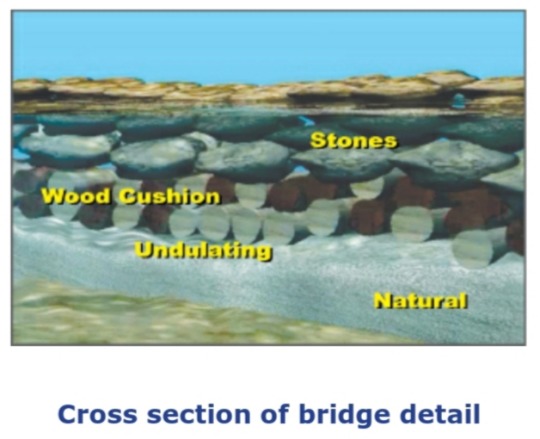
None of these arguments are conclusive by themselves. But honestly guys, put together, there is a strong case that, after all, Ram and Ramayan may not be mere mythology. Maybe they are history - Itihas!
If they are, I would agree with Dr. Hari and his wife that Ram Sethu should be a protected monument. I will join them in demanding for a UNESCO world heritage site declaration for this piece of geography. Already in the past 500 years, a large part of it was lost to a cyclone. It is said that till 1480 AD, the bridge was a meter over sea level and one could walk from India to Sri Lanka over it.

And I look forward to the current BJP led NDA government and its minister, Nitin Gadkari's proposal that a bridge should be made from India to Sri Lanka, instead of a canal. This fits beautifully with this government's Look East foreign policy, whereby they are connecting all our neighbouring countries, as a counter to China and its aggressive intent.
#alfred dundas taylor#Sethusamudram project#Sethusamudram canal#bharat gyan#adams bridge#historical rams#d k hari#d k hemahari#rama#mythology#look east#archae astrology#dating of ram#planetarium software#Itihasa#history#rameshwaram#Dhanushkodi#talaimannar#Nala setu#rama setu
10 notes
·
View notes
Text
Dr. Pranab Mukherjee
Namashkar. You are listening to a Divyansh Garg podcast. You can now listen to my podcasts on Youtube and Spotify and get them in a blog format on tumblr. Use headphones for a better experience. On 31st August 2020 the Bharat Ratna awardee passed away. The 13th President of Independent India, one of the oldest congress leaders, he was Dr. Pranab Mukherjee. So let’s have a detailed look on his journey.
But before that, it often comes in our mind that why am I talking about this person? Aisa kya contribute kiya hai unhone hmari country ke liye? Why is he so important? The answer to this question is very simple. He was among the last of the Congress leaders to have worked closely with Indira Gandhi. Mukherjee’s death marks the end of an era in the Congress. He has severed our country as foreign, defense, commerce and finance minister. He was also a Deputy Chairman of the Planning Commission. Nevertheless Mukherjee served the country as its 13th President for five years from 2012 to 2017.
So let’s begin with his journey. Pranab da was born into a Bengali family at Mirati, a village in the Bengal Presidency of British India. Unke pitaji, Kamada Kinkar Mukherjee was active in the Indian independence movement and was a member of West Bengal Legislative Council as a representative of the Indian National Congress. Unki ma thi Rajlakshmi Mukherjee. Unke do siblings bhi the: older sister Annapurna and younger brother Piyush.
On growing up he earned an MA degree in Political Science & History and an LL.B. degree; both from University of Calcutta. Unki shadi Suvra Mukherjee se hui. In 1963, he became a lecturer of Political Science at Vidyasagar College and he also worked as a Journalist before entering politics. Being a lecturer and a journalist, unhe koi idea nhi tha ki vo kabhi politics me bhi apne kadam rakhenge. But destiny wanted something else.
Pranab da’s political journey started in West Bengal when he was the election agent for VK Krishna Menon, who won the election as an independent candidate. Later, He became a member of Rajya Sabha in July 1969 on a Bangla Congress ticket. And then there was no turning back. The Prime Minister of India, Indira Gandhi, had recognised Mukherjee's talents and recruited him to her party, the Indian National Congress. It was her who brought in the ‘little master’ to the Rajya Sabha as a member of the Bangla Congress. Mukherjee also became a Gandhi loyalist aur unhe Indira Gandhi ji ka "man for all seasons” bhi kaha jane laga.
Mukherjee received his first ministerial assignment with Indira Gandhi in 1973, first as junior minister of industrial development. Within two years, he was elevated as a deputy minister with independent charge of revenue and banking departments. Bombay smuggling underworld don Haji Mastan ke upar kai crackdowns lagwane ki wajah se ve boht hi jald surkhiyo me aane lage the.
Mukherjee was active in the Indian cabinet during the controversial Internal Emergency of 1975–77. Ruling Congress politicians of the day including Mukherjee ko aksar accuse bhi kiya jata h for using extra-constitutional powers to "wreck established norms and rules of governance." In 1982, shortly after Gandhi returned to power from the post-Emergency oblivion, she appointed Mukherjee as India’s finance minister, replacing R Venkataraman.
As finance minister, Mukherjee had fiery innings. International Monetary Fund (IMF) loan ke $1.1 billion ki instalment vapis pahuchne ke sath hi unhone puri duniya ko surprise kr diya tha. A cautious reformer, he was nevertheless the first to stoke up expenditure without letting inflation get out of hand. He also opened the NRI investment window, which pioneered sweeping changes in India’s image as a destination of foreign funds.
Lekin Indira Gandhi ke assassination ke bad Mukherjee ko congress se side kr diya gya tha. Although Mukherjee was much more experienced in politics than Indira's son, Rajiv Gandhi, it was Rajiv who gained control. Mukherjee lost his position in the cabinet and was sent to manage the regional West Bengal Pradesh Congress Committee. He was considered to be Indira's likely successor and, siding with those within his party who aligned themselves against Rajiv Gandhi, Mukherjee was sidelined and eventually expelled from the mainstream.
Mukherjee's political career revived following Assassination of Rajiv Gandhi in 1991 when P. V. Narasimha Rao chose to appoint him as deputy chairman of the Indian Planning Commission and subsequently as a union cabinet minister. Mukherjee served as External Affairs Minister for the first time from 1995 to 1996 in Rao's cabinet. Mukherjee also played a pivotal role in helping the India-US civil nuclear agreement sail through despite threat of the government being toppled.
Mukherjee became Leader of the House in the Lok Sabha in 2004. Jab 2004 me Sonia Gandhi ne pm bnne se mana kr diya to ye assume kiya gya ki ab Mukherjee hi pm ki kudsi smbhalenge. However, Manmohan Singh was chosen. Though he played many important roles in Manmohan Singh’s government. He served five times as a member of Rajya Sabha and twice as a member of the Lok Sabha. He was conferred Padma Vibhusan, India’s second-highest civilian award, in 2008.
Known for his sharp memory, clarity of thought and grasp over issues, Mukherjee has the rare distinction of serving as foreign, defence, commerce and finance minister. He was also a Deputy Chairman of the Planning Commission. And finally, Mukherjee served the country as its 13th President for five years from 2012 to 2017.
Apne presidential career me unka kabhi kisi bhi political party se clash nhi hua. Such a living legend he was. His story tells us about the true meaning of struggle. Kitni bar unpr saval uthaye gaye aur na jane kitni bar unhe neeche girane ki koshish ki gayi. But his calm and focused attitude was above the world’s obligations. Itna bada life lesson hme vo aaj deke gaye hai. And 2012 me, he got what he actually deserved. May his soul rest in peace. Dhanyavad.
Namashkar. You are listening to a Divyansh Garg podcast. You can now listen to my podcasts on Youtube and Spotify and get them in a blog format on tumblr. Use headphones for a better experience. On 31st August 2020 the Bharat Ratna awardee passed away. The 13th President of Independent India, one of the oldest congress leaders, he was Dr. Pranab Mukherjee. So let’s have a detailed look on his journey.
But before that, it often comes in our mind that why am I talking about this person? Aisa kya contribute kiya hai unhone hmari country ke liye? Why is he so important? The answer to this question is very simple. He was among the last of the Congress leaders to have worked closely with Indira Gandhi. Mukherjee’s death marks the end of an era in the Congress. He has severed our country as foreign, defense, commerce and finance minister. He was also a Deputy Chairman of the Planning Commission. Nevertheless Mukherjee served the country as its 13th President for five years from 2012 to 2017.
So let’s begin with his journey. Pranab da was born into a Bengali family at Mirati, a village in the Bengal Presidency of British India. Unke pitaji, Kamada Kinkar Mukherjee was active in the Indian independence movement and was a member of West Bengal Legislative Council as a representative of the Indian National Congress. Unki ma thi Rajlakshmi Mukherjee. Unke do siblings bhi the: older sister Annapurna and younger brother Piyush.
On growing up he earned an MA degree in Political Science & History and an LL.B. degree; both from University of Calcutta. Unki shadi Suvra Mukherjee se hui. In 1963, he became a lecturer of Political Science at Vidyasagar College and he also worked as a Journalist before entering politics. Being a lecturer and a journalist, unhe koi idea nhi tha ki vo kabhi politics me bhi apne kadam rakhenge. But destiny wanted something else.
Pranab da’s political journey started in West Bengal when he was the election agent for VK Krishna Menon, who won the election as an independent candidate. Later, He became a member of Rajya Sabha in July 1969 on a Bangla Congress ticket. And then there was no turning back. The Prime Minister of India, Indira Gandhi, had recognised Mukherjee's talents and recruited him to her party, the Indian National Congress. It was her who brought in the ‘little master’ to the Rajya Sabha as a member of the Bangla Congress. Mukherjee also became a Gandhi loyalist aur unhe Indira Gandhi ji ka "man for all seasons” bhi kaha jane laga.
Mukherjee received his first ministerial assignment with Indira Gandhi in 1973, first as junior minister of industrial development. Within two years, he was elevated as a deputy minister with independent charge of revenue and banking departments. Bombay smuggling underworld don Haji Mastan ke upar kai crackdowns lagwane ki wajah se ve boht hi jald surkhiyo me aane lage the.
Mukherjee was active in the Indian cabinet during the controversial Internal Emergency of 1975–77. Ruling Congress politicians of the day including Mukherjee ko aksar accuse bhi kiya jata h for using extra-constitutional powers to "wreck established norms and rules of governance." In 1982, shortly after Gandhi returned to power from the post-Emergency oblivion, she appointed Mukherjee as India’s finance minister, replacing R Venkataraman.
As finance minister, Mukherjee had fiery innings. International Monetary Fund (IMF) loan ke $1.1 billion ki instalment vapis pahuchne ke sath hi unhone puri duniya ko surprise kr diya tha. A cautious reformer, he was nevertheless the first to stoke up expenditure without letting inflation get out of hand. He also opened the NRI investment window, which pioneered sweeping changes in India’s image as a destination of foreign funds.
Lekin Indira Gandhi ke assassination ke bad Mukherjee ko congress se side kr diya gya tha. Although Mukherjee was much more experienced in politics than Indira's son, Rajiv Gandhi, it was Rajiv who gained control. Mukherjee lost his position in the cabinet and was sent to manage the regional West Bengal Pradesh Congress Committee. He was considered to be Indira's likely successor and, siding with those within his party who aligned themselves against Rajiv Gandhi, Mukherjee was sidelined and eventually expelled from the mainstream.
Mukherjee's political career revived following Assassination of Rajiv Gandhi in 1991 when P. V. Narasimha Rao chose to appoint him as deputy chairman of the Indian Planning Commission and subsequently as a union cabinet minister. Mukherjee served as External Affairs Minister for the first time from 1995 to 1996 in Rao's cabinet. Mukherjee also played a pivotal role in helping the India-US civil nuclear agreement sail through despite threat of the government being toppled.
Mukherjee became Leader of the House in the Lok Sabha in 2004. Jab 2004 me Sonia Gandhi ne pm bnne se mana kr diya to ye assume kiya gya ki ab Mukherjee hi pm ki kudsi smbhalenge. However, Manmohan Singh was chosen. Though he played many important roles in Manmohan Singh’s government. He served five times as a member of Rajya Sabha and twice as a member of the Lok Sabha. He was conferred Padma Vibhusan, India’s second-highest civilian award, in 2008.
Known for his sharp memory, clarity of thought and grasp over issues, Mukherjee has the rare distinction of serving as foreign, defence, commerce and finance minister. He was also a Deputy Chairman of the Planning Commission. And finally, Mukherjee served the country as its 13th President for five years from 2012 to 2017.
Apne presidential career me unka kabhi kisi bhi political party se clash nhi hua. Such a living legend he was. His story tells us about the true meaning of struggle. Kitni bar unpr saval uthaye gaye aur na jane kitni bar unhe neeche girane ki koshish ki gayi. But his calm and focused attitude was above the world’s obligations. Itna bada life lesson hme vo aaj deke gaye hai. And 2012 me, he got what he actually deserved. May his soul rest in peace. Dhanyavad.
1 note
·
View note
Text
#SinghisKing

“Dr. Manmohan Singh-hahaha...he’s legit the carbon copy of a robot” I said, until I came across this illuminating book written by Mr. Sanjaya Baru (Media Advisor of the PM).
To being with, when Dr. Manmohan Singh became the ‘Prime Minister‘ which was in 2004; I was 3 years old, unaware of : who is a Prime Minister?, what do they do?, why do they have to work in the PMO?, for how many UPA’s will one work? and etc..
Today, still naive but mentally able to understand ‘how the world works!‘ I read this book within 4 days and truly it has immensely given a new shape to my thoughts..Felt like I fed my brain the right food!
Our 13th Prime Minister wasn’t a puppet of the Gandhi family, but did have an clever brain of his own, but because of his soft heart somewhere down the line masses con-tempted him.
Before talking about his work, let me give you a glimpse of his corporeal attitudes. Dr. Manmohan Singh is a very shy, soft spoken and decent human with utmost values in life, respecting each and everything that he has. Also, a little innocent which made him say himself how he became “The Accidental Prime Minister.“ However, he was a brilliant economist!
Shifting towards his work/profession, the whole world eyed onto; there are two perspectives of the same! Firstly, Dr. Manmohan SIngh was used as a face for Sonia Gandhi to keep the Congress Party alive but securing her life by not taking the post. As a result of which Dr. Manmohan Singh was chosen. Although the above is not the complete truth. The second p.o.v is that Sonia Gandhi looked up to him as a ‘father figure‘, although not much are aware of it, correspondingly because of which people called him a “Mask!“.
Very much appalling to see how the ‘Nuclear Deal-Agreement 123‘ couldn’t be implemented... He was actually the King but the leftist tried to show him the king of sins. Moreover his attitude towards them was more mesmerizing to see, because we must learn from him; how to tackle things.
Dr. Manmohan Singh had appointed Mr. Sanjaya Baru as his media advisory himself and that was the best thing he ever did for himself indirectly because he was unaware of taking things into control as a Prime Minister. The whole nation should be thankful to Mr. Sanjaya Baru because he just didn’t do the “making and unmaking of Dr. Manmohan SIngh“ but also showed the world the reality of PMO/Congress Party/Political TURF/Leftist party/Coaliation.....
I believe that my above words are just the smell of reality! Its just the toppings of the cake that you can see here. The actual life of our Former PM is so much interesting that I would like each one of you reading this; shall read the book.
To conclude with; a quote by him that I will never forget in my life is: “In life sometimes its wise to be foolish”. I request all of you to read this book and tell the world about reality. Also pray for him to stay as much healthy...!
2 notes
·
View notes
Text
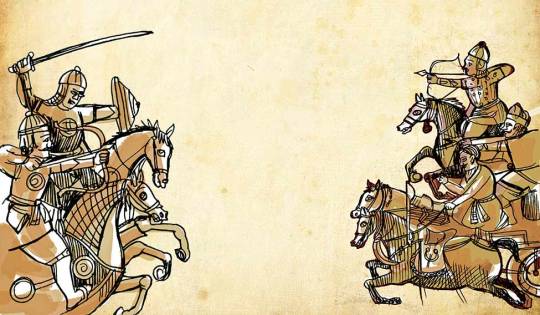
New World Order and God father(s):
Ancient civilizations believed in Supremacy i.e., derived by power dispensation of existing rulers either politically or diplomatically.
Power dispensation between the two Global Gaints (USAmerica & Russian Federation)and Blitzkrieg of collapsed economies were at underrated stage in the early year of 2020. The Gulf Monarchs tied hands themselves, unknown to this current scenario and Middle East countries facing war turmoil. Central Asia becoming war mongers.
The fall of prosperous Arab nations like Afghanistan, Iraq, Libiya, Syria, Yemen and Economically under previlaged Iran followed by Qatar on Global Sanctions are seeking a temporary bailout from the First world countries or G20. Never to forget the atrocities happened on Humankind during the dictatorial regime of Ladens, Saddams, Gaddafis, Khomeinis, Mubaraks and few Emirs and the Clintons, Bush's and Obamas till Trumps who continued to dominate and patriate those dictators with their ancestors. The Oligarchs of the Liquid Diamond (CRUDE Oil, a Liquid Fossil, most expensive in demand) perished and America became undeclared, self decorated AGENT who trades it accoss the Globe.
Following which few of the Monarchs in Kuwait, Saudi and Arab Emirates followed the Agent, equivocal and unopposed.
By accepting the hard fact, life is not normal for people in these Arab countries who are abundantly rich in Liquid Fossil i.e., Oil resources. My focus point on this precious liquid, which drew the War Dog America conquering these countries.
I would like to reiterate few of the 3rd World Countries too who were fallen dumfaced to the American strategy under Clinton and faced deep drubbing, CUBA, VENEZUELA Etc.
So called recently Developed and still developing nations like India, China, Japan Europe and South American countries, became the customers of America but not to the Original producer Of Liquid Diamond.
Russia, having said the world leader in majority of its share on this earth by Land Mass, Destructive weapons, Space Technology, abundant of natural resources, Including Liquid Diamond alongwith proven Natural Gas reserves.
https://en.m.wikipedia.org/wiki/Energy_in_Russia
Now the dominance of the World Order is clear. Irrespective of many sanctions Russia emerged as frontrunner in Weapons exports. Thanks to World's Largest Democracy and a diplomatically safest country INDIA and to CHINA, a Strong Policy maker. Also, Russia proved to be only gamble to majority of European Nations for their dependancy on Natural Gas on Russia, that is cheap and easily transited.
Now, few of the Monarchs are red eyed on Russian President, my most adorable name, that sounds really powerful, Mr. Vladimir Vladimirovich Putin.
The silent, all powerful, no nonsense, all whether ally of world's quarter of the population I.e., India and China.
The most decisive Nationalist, Stalinist, powerful ruler of all times in Russia. He who will be surpassing the Greatest Russian Warlord Joseph Stalin, his predecessor in coming days, once the referendum votes in mid or late 2020. The Russian Supreme court had approved the constitutional amendment for extending the President Terms till 2036, which makes him longest serving democratically elected leader ruling any nation and become Head of the state after elected.
Syria and Iran got blessings in disguise when Russian Air force backed the Bashar Al Assad regime and signed numerous treaties with Ahmedinejad respectively. At the time of sanctions on Iran by Donald Trump, so called last Agent, American President, who seemingly erroneous, impolite, and an ardent(passionate) dumb, Putin revoked the Price war between Saudi and other OPEC countries. Now no IRAN and QATAR to supply cheap Oil and Gas to the Rest of the World, Saudi King and Monarchs who are liberals per say to Americans, got their foot in mouth.
The great loss of trading and shipments business of the Agents made themselves struck in a recession and to bail their own country's economy themselves with $2 trillion. No IMF can support such huge package. Agents, so called Americans not only drew themselves but took majority of European nations too alongwith them.
Saudi Arabia, the leading producer as of now after Venezuela (largest crude Oil reserves proven, but not extracted) got into price war to cut the Oil output with Russia didnt heed the global attention. Lost the battle and dusted, Agents, influenced Saudis finally to accept a contract agreement with Russia on Oil Output standards according to latters requirements. This is the first time, a NoN OpEC country defining SoPs of an overseas terms in the history of world. This applies to all the treaties and agreements, even America couldn't make offlate.
Russian federation after the collapse of USSR in 1990s, the Chinese opened the market for foreign exchange and investments. India under PV narasihma rao diversified major economic reforms under able leadership of then Finance Minister, Dr. Manmohan Singh. Only support to Russia was these two developing nations with opposite philosophies and prophecies.
After 21 years, first when a hardcore drunken master president, Boris Yeltsin called this ex-KGB agent Valdimir Putin to take charge of the Largest Country by land mass which couldn't be conquered in the history, RUSSIA.
Putin, waited for so many years, underwent so much of isolation, political drubbing, economic sanctions. Still emerged victorious and as the Real Boss, with help of two good friends. One, INDIA, under the leadership of a leader who democratically elected with huge majority for second term Mr. Narendra Modi and Second, CHINA under leadership of 1st ever President Mr Xi Jinping, after Mao Zedong who will serve in the President office for life.
Truth is, Russia emerged as Boss of the new World order without waging war and losing any of their resources.
SK
(Sharathkumar)
http://administratorsharu.blogspot.com/2020/04/new-world-order-and-god-fathers.html
(The author has expressed his opinions and thoughts on the basis of facts that are published in mass media. Author also mentions Oil, in reference to Crude Oil as Liquid diamond in comparison to most expensive and demand quotient)
1 note
·
View note
Text
[ad_1] Singapore’s Minister for Foreign Affairs Vivian Balakrishnan visited Indian High Commission in Singapore and signed the condolence book opened in memory of former Prime Minister Manmohan Singh. Balakrishnan described Manmohan Singh as an “eminent statesman” who served India with humility and integrity. Vivian Balakrishnan also highlighted Manmohan Singh’s role in strengthening ties between India and Singapore. He also shared an old picture in which former Singapore PM Lee Hsien Loong was interacting with Manmohan Singh. In a post on X, Balakrishnan stated, “Manmohan Singh was an eminent statesman who served his country with humility and integrity. He also strengthened India ties. Our thoughts are with Dr Singh’s family and the people of India during this period of loss.” Dr Manmohan Singh was an eminent statesman who served his country with humility and integrity. He also strengthened India-Singapore ties. Our thoughts are with Dr Singh’s family and the people of India during this period of loss. : MFA (1), PMO (2) pic.twitter.com/mUJfoYkAsy — Vivian Balakrishnan (@VivianBala) December 30, 2024 Indian High Commission in Singapore appreciated Vivian Balakrishnan for visiting Indian High Commission in Singapore to offer condolences on Manmohan Singh’s demise. In response to Vivian Balakrishnan’s post on X, Indian High Commission in Singapore stated, “We sincerely appreciate Hon’ble Minister for Foreign Affairs of #Singapore @VivianBala for visiting the @HCI_Singapore to sign the Condolence Book opened in memory of Dr. Manmohan Singh, former Prime Minister of India.” Manmohan Singh passed away at the age of 92 due to age-related medical issues in Delhi on December 26. He was cremated with full state honours at Nigambodh Ghat in Delhi’ Kashmere Gate in the presence of his family, friends, colleagues, and government dignitaries on December 28. [ad_2] Source link
0 notes
Text
[ad_1] Singapore’s Minister for Foreign Affairs Vivian Balakrishnan visited Indian High Commission in Singapore and signed the condolence book opened in memory of former Prime Minister Manmohan Singh. Balakrishnan described Manmohan Singh as an “eminent statesman” who served India with humility and integrity. Vivian Balakrishnan also highlighted Manmohan Singh’s role in strengthening ties between India and Singapore. He also shared an old picture in which former Singapore PM Lee Hsien Loong was interacting with Manmohan Singh. In a post on X, Balakrishnan stated, “Manmohan Singh was an eminent statesman who served his country with humility and integrity. He also strengthened India ties. Our thoughts are with Dr Singh’s family and the people of India during this period of loss.” Dr Manmohan Singh was an eminent statesman who served his country with humility and integrity. He also strengthened India-Singapore ties. Our thoughts are with Dr Singh’s family and the people of India during this period of loss. : MFA (1), PMO (2) pic.twitter.com/mUJfoYkAsy — Vivian Balakrishnan (@VivianBala) December 30, 2024 Indian High Commission in Singapore appreciated Vivian Balakrishnan for visiting Indian High Commission in Singapore to offer condolences on Manmohan Singh’s demise. In response to Vivian Balakrishnan’s post on X, Indian High Commission in Singapore stated, “We sincerely appreciate Hon’ble Minister for Foreign Affairs of #Singapore @VivianBala for visiting the @HCI_Singapore to sign the Condolence Book opened in memory of Dr. Manmohan Singh, former Prime Minister of India.” Manmohan Singh passed away at the age of 92 due to age-related medical issues in Delhi on December 26. He was cremated with full state honours at Nigambodh Ghat in Delhi’ Kashmere Gate in the presence of his family, friends, colleagues, and government dignitaries on December 28. [ad_2] Source link
0 notes
Text
An insider’s tale of UPA’s success, failure, writes Karan Thapar - columns

Unlike the British, we do not write memoirs. Which is perhaps why Montek Ahluwalia begins his book Backstage: The Story Behind India’s High Growth Years with the insistent disclaimer: “This book is not a memoir.” He wants to convince the reader it’s “a travelogue of India’s journey of economic reforms.” But, sophistry apart, this is definitely a memoir, and that’s the principal reason why you would want to read it. More important, it is the first insider account of the United Progressive Alliance (UPA)’s decade in power, written by someone who served at the very heart of that government. Ahluwalia’s telling of the UPA’s 10 years raises an intriguing question: Why, after achieving so much, as he convincingly argues, did it crash out in disgrace? At the time, we thought the answer lay in the corruption scandals and policy paralysis that surrounded the government, made worse by the belief that Manmohan Singh was a weak leader and the country was yearning for a more decisive prime minister. Ahluwalia’s book suggests an interestingly different answer. First, however, let’s recall the key achievements of that decade. The UPA gave us Right To Information, the nuclear deal, the rural employment guarantee scheme, Aadhaar and the biggest-ever reduction in poverty. But it was on the economic front that it excelled. “The performance of this government in the first seven of its 10 years was outstanding. The economy clocked an average growth of 8.4% in this period, the fastest growth rate ever”, writes Ahluwalia. “Pulling 138 million persons above poverty was hailed internationally as a major achievement.” If I’ve understood Ahluwalia correctly, the first problem was that the UPA responded inadequately, even incorrectly, to the 2G and “Coalgate” controversies. In the process, it allowed them to become scandals that shrouded its successes. Ahluwalia says the UPA should have flagged a critical question about the Comptroller and Auditor General (CAG)’s conclusion the exchequer lost money because spectrum and coal were sold cheaply. “The question to ask is whether the decision to charge a lower price was justified for achieving the broader objectives of policy. That is what a real performance audit would have done, but the CAG never attempted this.” Unfortunately, the government didn’t either. Yet, if it had, it could have made a convincing case. “The logic of the lower price was that it would stimulate a faster growth of telecom, which it clearly did,” Ahluwalia writes. “Faster expansion of telecom also led to a faster growth in GDP … (and) an additional flow of revenue.” All of this, he says, “needed to be taken into account … (but) no such effort was made.” To be fair, Kapil Sibal did try. But he only said it once and when his zero-loss explanation was ridiculed, he never repeated it. Yet, it was the truth and by failing to stand by it, the UPA forsook its most credible defence for a sullen silence. The second part of Ahluwalia’s answer is political. “Manmohan Singh never bragged about his achievements. He genuinely believed it was best to let the results speak for themselves. But because neither he, nor his party, projected these achievements, they never formed part of the political discourse.” And once they were taken for granted, they were soon forgotten. In fact, this reluctance to claim credit also infected the Congress. “I remain puzzled why the Congress party was unwilling to claim credit for reducing poverty”, comments Ahluwalia. Consequently, the Congress never established “the UPA (economic) strategy was working in a way that earlier strategies had not.” This silence cost the party recognition of its greatest achievement. Ahluwalia ends by revealing, “I have often urged Dr Manmohan Singh to write his memoirs but have had no luck so far.” The former PM is waiting for history’s verdict, confident it will be kinder than that of his contemporaries. Yet, that could be hampered by his refusal to leave behind his side of the story. Ahluwalia’s account of the UPA years will, no doubt, help but you do expect former PM’s to speak for themselves. In contrast, how different is the Bharatiya Janata Party and Narendra Modi? They’ve even claimed credit for what their predecessors did! Until Ahluwalia spoke out, the UPA’s silence helped them. Karan Thapar is the author of Devil’s Advocate: The Untold Story The views expressed are personal Read the full article
#24/7newsupdates#3newsupdates#30thnewsupdates#3awnewsupdates#5newsupdates#570newsupdates#58newsupdates#5pmnewsupdates#6newsupdate#680newsupdates#69newsupdates#7newsupdateadelaide#7newsupdategoldcoast#7newsupdateperth#7newsupdateplainsvideo#7newsupdatesydney#7newsupdatesbrisbane#7newsupdatesmelbourne#9newsfireupdates#9newslatestupdates#9newsliveupdates#9newsweatherupdates#9&10newsupdates#92newsupdatesinurdu#9janewsupdatesnow#arynewsupdates#aplatestnewsupdatesintelugu#apnewsupdates#apnewsupdatestelugu#apnewsupdatestoday
0 notes